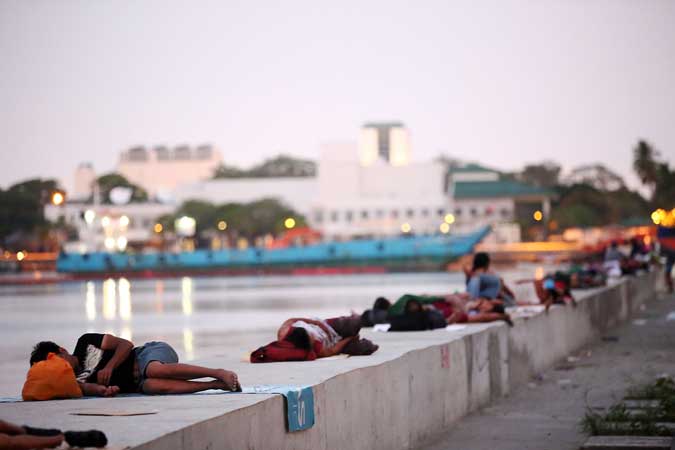By Beatrice M. Laforga , Reporter
THE GOVERNMENT now expects the unemployment rate to average 7-9% by 2022, as the coronavirus pandemic triggered massive layoffs.
The latest National Economic and Development Authority (NEDA) report on the October Labor Force Survey showed the government aims to bring down the jobless rate to 7-9% by 2022, after the unemployment rate averaged 10.2% so far this year.
Under the Philippine Development Plan (PDP) adopted in 2016, the unemployment rate was expected to hover around 3-5% by 2022.
The NEDA has updated employment targets in the country’s medium-term blueprint to take into account the impact of the pandemic on the economy.
The updated PDP and revised goals will need final approval from the NEDA Board — which is chaired by President Rodrigo R. Duterte, according to NEDA National Policy and Planning Staff (NPPS) Director Reynaldo R. Cancio.
“The extensive impact of the COVID-19 pandemic has taken a toll on the government’s employment related targets in the PDP 2017-2022. This outturn warrants more aggressive policy actions to ensure that the revised targets will be achieved,” the report read.
The NEDA report showed the government failed to meet its initial target to lower the jobless rate to 3.8-5.2% in 2020 as many businesses were badly affected by the strict lockdown and economic slowdown.
Official data showed the unemployment rate eased to 8.7% of the labor force in October, from 10% in July and the record 17.7% in April. Underemployment rate — or the proportion of those already working but still looking for more work or longer working hours, dropped to 14.4% in October from July’s 17.3%.
The increase in the jobless rate meant 2.571 million jobs were shed for the entire year, missing the initial goal of adding up to 1.1 million jobs by year’s end.
“Amid the extraordinary circumstances brought by the COVID-19 pandemic, the majority of the employment related targets in the PDP 2017-2022 were not met in 2020,” NEDA said.
The government was not able to meet the goal of reducing the jobless rate among youth to 9.2% after official data showed this spiked to 19.4% this year. It also failed to increase the labor force participation rate of women to 50.5% this year, with the actual rate slipping to 45.8%.
The government only reached two goals and exceeded one out of its seven employment targets for the year, with underemployment rate outside the capital region hitting 17.3% (within 16.9-18.9% target); percentage of youth not in education, employment or training lowered to 18.5% (within the goal of 17.5-19.5%); and the target of reducing discouraged job seekers to 3.9% (exceeding the 11% target).
“Providing relevant and timely policies will be crucial to stay on track in improving employment profiles,” the NEDA said.
At the same time, the socioeconomic planning agency set bleaker employment targets for other indicators such as the youth unemployment rate which is now targeted to settle within 20.5-22.2% by 2022, drastically far from the initial goal of lowering the rate to 8-11%.
A more ambitious target for underemployment levels in areas outside Metro Manila was set at 15.5-17.5% by 2022 from the goal set in 2016 at 16-18%.
The NEDA has set new targets in increasing the participation rate of women in the workforce to 48.5-50.5% by 2022; reducing the percentage of discouraged job seekers to 11%; and bringing down the percentage of youth not in school, employment or training to 17-19%.
To achieve these revised employment goals, NEDA said the government should boost the agriculture sector’s resilience to natural disasters and climate change, while mass transport should be ramped up further amid looser quarantine rules to support resumption of economic activity.
Cash-for-work programs and ramping up the “Build, Build, Build” infrastructure program can also boost job generation across the country as well as other relief measures the government provides to hard-hit sectors such as emergency cash grants and loan programs.
“Upskilling and retooling of displaced workers, especially those from vulnerable groups may be prioritized. Training programs need to be designed to develop in-demand skills as we transition to the new normal (i.e. digital adeptness and technological skills). Targeted training modules may need to be developed to address the needs of the youth, displaced workers, new entrants to the labor force, and the vulnerable sector,” the report said.
The NEDA said job creation would depend on the pace of economic recovery, so the timely passage of next year’s P4.5-trillion budget and bills proposed to lower corporate income tax and create special purpose vehicles where banks can offload bad assets onto are crucial to achieving these targets.
“These will ensure the accelerated implementation of the country’s main growth drivers such as projects under the (infrastructure) program and digital infrastructure developments. Overall, these are expected to create more employment opportunities and drive productive activities across industries,” it added.

